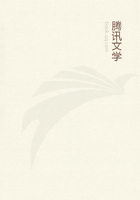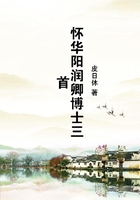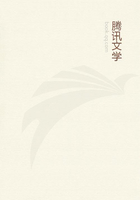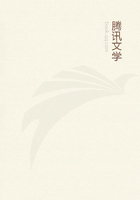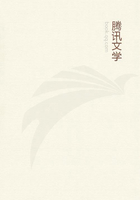The Hopi House The Harvey Collection at El Tovar. In the Hopi House, opposite the El Tovar entrance, is installed one of the most interesting Indian collections of the world,--a collection that would grace the National Museum of Great Britain, France or Germany. The more intelligent the visitor to the Grand Canyon, the more he will find he can learn in this wonderful storehouse provided for his instruction and recreation.
The Hopi House. The building itself is a perfect model of a block in the village of Oraibi, one of the seven Hopi pueblos. It is three stories high, and contains many rooms. The original is supposed to accommodate forty-five families. It is built of the chips of sandstone and other rock in accordance with Hopi custom, rudely and irregularly laid in mortar. It is of the terraced style of architecture, each story receding from the one below it, so that the "second story front" finds a ready courtyard on the roof of the "first story front," and the "third story front" on that of the "second story front."Houses that were Forts. In the old houses, found when the white man first visited the pueblos, there was no means of entrance to the first stories save by means of the ladders which stood outside against the walls, and thence through hatchways made in the roofs. This was for the purpose of defence against hostile tribes, who were constantly warring with these home-loving Indians in order that they might steal from them the fruits of their persistent labor and thrift. The ladder, during times of expected attack, could be lifted upon the second story, out of reach, and thus these houses became the forts of their inhabitants. Nowadays entrances are provided on the ground floor, and this house at El Tovar follows the modern custom, as well as the later innovation (which of course is essential in this building) of using glass for windows. For convenience and safety, another anachronism is tolerated in the electric light. In practically everything else, the building is a true model of a Hopi community house.
With these people, the women are generally and mainly the builders of the houses, the men merely assisting in the heavier work.
Quaint Stairways. In addition to the quaint ladders, quainter steps, cut into flat or round trunks of cottonwood trees, are used. Stone steps connecting the two upper stories, are also built outside in the partition walls. The chimneys are constructed, in true pueblo fashion, of pottery water ollas, the bottoms of which have been broken out. Three or more of these, fastened with cement or mortar, are placed one above another. On the roofs are wood piles, as at Oraibi, and also picturesque strings of red peppers drying in the sun.
Navaho Silversmith. The entrance doorway is low, and the steps lead one down into the first room, in true Oraibi style. This room is occupied by the Tinne peshlikai, or Navaho silversmith, and Navaho blanket weavers. The smith, though using some modern tools, still follows the time-honored methods of his brother craftsmen. The silverware he makes will be more fully described in the special chapter devoted to the subject, as will also the blanket weaving of his wife and children.
Details of Construction. In this room there are several features of interest. First notice the construction of the building. The roof is supported by a massive upright, in a crotch, or V, on which the cross rafters rest. Lesser poles are placed upon these at right angles, which in turn support arrow-weed, willows, and other light brush. In the genuine Hopi construction, mud is then plastered or laid thickly over these willows; but as these rooms contain valuable collections of goods, a modern roofing has been used, which, however, does not in any way detract from the "realness" of the building.
Fireplace. In the corner is one of the quaint hooded fireplaces, with the raised hearth, exactly similar to several I have sat before in Oraibi, while my hospitable hostess prepared some Hopi delicacy or substantial food to tickle the palate or appease the hunger of her welcomed guest.
Mealing Stones. On the left is a quartet of corn-grinders, walled in from the floor by stone slabs laid in cement. In every pueblo house, a "battery"of these mealing stones is to be found, and it is one of the commonest of sights to find the women and girls on their knees, with the grinder in hands, rubbing it briskly up and down with the swing of the body, while every few moments, with a deft movement of the hand, the grain is thrown between the grinder and the stone beneath. The motion reminds one much of that required over the washing board. While thus at work, the Pueblo women sing some of their sweetest songs.
Hair Dressing. Occasionally when a Hopi mother, whose daughter has reached maidenhood, is located in the Hopi House, one may chance to find her engaged in turning the heavy black hair of her "mana" into the big whorls on the side of her head which are the Hopi emblem of maidenhood and purity.
The mother herself wears her hair in two pendant rolls. These are the symbols of fruitfulness and chastity.
It is interesting also to see them make piki, a process elsewhere fully described.
Various Baskets. In the various rooms on the ground floor, the observing and curious will find quite a number of quaint architectural devices. The chief attractions to most visitors are the various Indian goods. There are baskets made by every Indian tribe in North America, Navaho wedding baskets made by Paiutes and used also by Apaches as medicine baskets; Havasupai, Pima, Hopi, and Katchina plaques; Hupa and Poma carrying baskets; Haida, Makah, Mescalero, Apache, Mission, Chimehuevi, Washoe, and a score of others. Here are pinion covered water-bottles of Navaho (tusjeh), Havasupai (esuwa), and Apache (tis-ii-lah-hah). Note the vast difference in the native names for practically the same thing.

